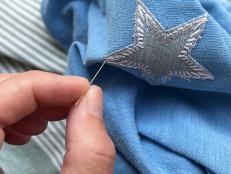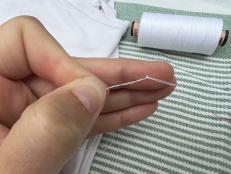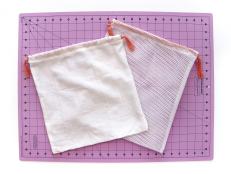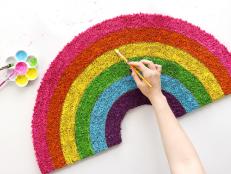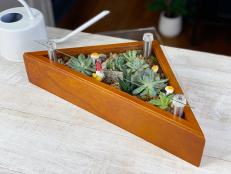How to Sell Your Art Online
Learn how to turn your creativity into cash flow; follow our pro-level advice for selling arts and crafts online.
If you’re a champion crafter or talented artist, you’ve probably wondered about how to share your work with the world and make a little money online. The good news is, there are more profitable platforms than ever before for your products. The catch? Online marketplaces are great sales tools, but making a profit requires hard work and consistent effort.

pixelfit
For first-hand advice, we consulted artist Kim Solga, author of The Everything Guide to Selling Arts & Crafts Online, who’s been selling her work on the Internet since 1995. Her chief recommendation: don’t sell online just for the sake of making money.
“Selling online will never work unless you pour yourself into it,” she says. “The key to success is social media and becoming part of an online community, so unless you love being online, don’t do it.”
Here are Solga’s top tips for success:
Start with a well-made, well-defined product. It should go without saying, but the first product you sell should be something you’re passionate about, and something you’ve spent a lot of time learning to make well. To see whether your product is right for online sales, do some offline work first.

anouchka
“Participate in face-to-face art shows or craft fairs to see how people respond to your work,” Solga advises. “You can learn more in one afternoon than in three months online. You can see what people are drawn to, and who your customer actually is.”
It’s natural to develop your product line as you go along — in fact, you want to be flexible once you start receiving feedback. But do start with a product that’s easy to define and market, and that can represent your whole brand well. Try writing the text you’ll post about it online — is it simple to describe? What makes it unique? Is it easy to tell customers why they want this product? If you find yourself struggling to describe what you’re selling, that could be a sign it needs a little more thinking.
Use an established online marketplace. There are many avenues for selling arts and crafts online, but if you’re just starting out, go with a trusted marketplace that gets you on your feet quickly. Etsy is the top gun in this space, with about 30 million active buyers and climbing, but there are other respected sites as well. For example, ArtFire is a large marketplace with a specific focus on arts and crafts (no vintage items); other smaller shops include ShopHandmade.com, Zibbet.com, Yessy.com and ICraftGifts.com.

How do you choose? As you’re starting out, Solga recommends choosing a site that doesn’t charge a monthly fee. “That allows you to get started without investing too much energy,” she says. Also make sure you use a platform that allows you to speak directly with customers (think Etsy’s Conversation function) and lets you link to your website, Facebook page, etc., so that you can build a following.
The most important thing is to have a presence where your target customer shops. If you have a niche product — say, quilting kits — you may be just as successful selling on a small niche platform just for quilters as on Etsy.
Mind the details when creating your shop. First of all, put serious effort into your images. “Photography will make you or break you,” Solga says. “Use clean background settings and good lighting.” All you need is a good smartphone and some practice, but get it right before you start posting products.

Bob Farley
When you write your product descriptions, focus on your unique angle. “The better you can tell your story, the more people will connect with it,” Solga says. That means being charming and conversational, but not wordy. Use bullet-list format to get lots of information across in an easily digestible way, and be sure to include the most popular search terms for your type of item. Etsy has lots of helpful tutorials posted that will help you figure out how to use its search engines to your best advantage.
Get ready for shipping before you start selling. “Many people make wonderful things but they haven’t thought about how they’re going to ship them attractively,” Solga says. “They get an order and they’re in a frenzy to find the right boxes. Before you know it, they’re expending a lot of energy trying to fulfill orders, they get slowed down, and they get a bad seller reputation.”
Practice packaging your items so that they’re safe from breakage and arrive looking attractive, and make sure you have a reliable inventory system so you know where everything is. You’ll need space to store finished products, ordered items awaiting processing, and packaged items ready to ship. Make an information sheet to include with each shipped item that includes a friendly greeting, some background info on the item, and care tips.
Don’t waste money on professionally printed packaging inserts when you’re selling handmade items. “The best shipping for handmade items has a handmade touch,” Solga says. “A little personal thank-you note is great — for example, if you’re a quilter, you could make it out of fabric remnants. You’re not trying to compete with things sold by corporations. You’re trying to be more personal than they are.”
Embrace social media. It’s a fact: you have to drive traffic to your shop if you want to make sales. So post about your products on Facebook, Instagram, Pinterest and Twitter. Visit other online shops to tag your favorite items, follow other shop owners and start conversations with them, and notice what they’re doing to promote their products. Set aside dedicated time for promoting your work every week so you make it a habit.
Add other pieces of the online marketing pie as you gain confidence. A website or blog lends credibility to your brand, and it’s the natural next step after you establish an online shop. (When you create your shop, register the same domain name online so that your website will have the same brand recognition.) You may also want to add listings at auction sites like eBay or create print-on-demand services that sell your art via T-shirts, prints and coffee mugs.
Once you start adding marketing functions, you’ll get a feel for what combination of sales tactics works best for you, and which methods you enjoy most. Follow the momentum wherever it takes you! Selling your work online isn’t just about making money — it can be a rich, gratifying way to connect with people who truly appreciate your work.







